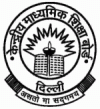
AIPMT 2012 Exam Syllabus
PHYSICS
Unit : 1 Introduction and Measurement
What is Physics? Scope and excitement; Physics in relation to science,
society and technology; Need for measurement of physical quantities, units for
measurement, systems of units-SI : fundamental and derived units. Dimensions of
physical quantities. Dimensional analysis and its applications. Orders of
magnitude, Accuracy and errors in measurement – random and instrumental errors,
Significant figures and rounding off the numbers. Graphs, Trigonometric
functions, Concepts of differentiation and integration.
Unit : 2 Description of Motion in One Dimension
Objects in motion in one dimension, Motion in straight line, Uniform and
non-uniform motion, its graphical representation and formulae, speed and
velocity, relative velocity, average speed and instantaneous velocity. Uniformly
accelerated motion, velocity-time graph, position-time graph and their formulae.
Relations for uniformly accelerated motion with examples. Acceleration in
one-dimensional motion.
Unit : 3 Description of Motion in Two and Three Dimensions
Vectors and scalars quantities, vectors in two and three dimensions, vector
addition and multiplication by a real number, null-vector and its properties.
Resolution of a vector in a plane, rectangular components. Scalar and vector
products. Motion in two dimensions, cases of uniform velocity and uniform
acceleration-projectile motion, general relation among
position-velocity-acceleration for motion in a plane and uniform circular
motion. Motion of objects in three dimensional space (elementary ideas).
Unit : 4 Laws of Motion
Force and inertia, first law of motion. Momentum, second law of motion,
impulse, examples of different kinds of forces in nature. Third law of motion,
conservation of momentum, rocket propulsion. Equilibrium of concurrent forces.
Static and kinetic frictions, laws of friction, rolling friction, lubrication,
Inertial and non-inertial frames (elementary ideas).
Unit : 5 Work, Energy and Power
Work done by a constant force and by a variable force, unit of work, energy
and power. Work Energy Theorem. Elastic and in-elastic collisions in one and two
dimensions. Notions of potential energy, conservation of mechanical energy :
gravitational potential energy, and its conversion to kinetic energy, potential
energy of a spring. Conservative forces. Different forms of energy, mass-energy
equivalence, conservation of energy.
Unit : 6 Rotational Motion
Centre of mass of a two-particle system, momentum conservation and centre of
mass motion. Centre of mass of rigid body, general motion of a rigid body,
nature of rotational motion, rotational motion of a single particle in two
dimensions only, torque, angular momentum and its geometrical and physical
meaning, conservation of angular momentum, examples of circular motion (car on a
level circular road, car on banked road, pendulum swinging in a vertical plane).
Moment of inertia, its physical significance, moment inertia of uniform bodies
with simple geometrical shapes, parallel axis and perpendicular axis theorem
(statements only), Comparison between translatory (linear) and rotational
motion.